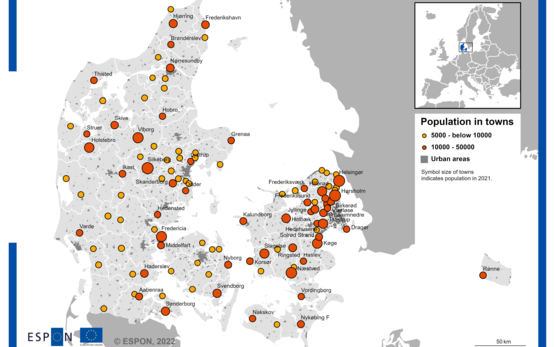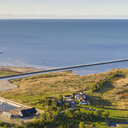Spotlight
-

Denmark, small and medium sized cities
Case Studies | August 25, 2022Looking for new activities and attractions to maintain vibrant town centres and develop appealing urban areas

Looking for new activities and attractions to maintain vibrant town centres and develop appealing urban areas

This report contributes to the Maritime Spatial Planning with two objectives: to undertake an analysis and characterization of the coastal and maritime planning and land-sea interactions from a mul

Article 174 of the TFEU states that: '’the Union shall aim at reducing disparities between the levels of development of the various regions and the backwardness of the least favoured regions.

This project, emanating from the targeted analysis project Maritime Spatial Planning and Land Sea Interactions (MSP-LSI) explores the potential spatial tensions between the deployment of renewable sources of blue energy (energy derived from our seas and oceans), with a particular focus on offshore wind energy, and other (potential) utilisations of the European seas.

This study analyses the implementation of an Integrated Territorial Investment (ITI) targeting small islands of the North Aegean Region in the 2014-2020 programming period, considering observed pat
Green infrastructure (GI) is considered a benefit for territorial development because it provides multiple functions within the same spatial area.
The joint ESPON and Interact Working Paper “Migration and the Role of European Territorial Cooperation (ETC)” stems from the conclusions of the General Affairs Council meeting in November 2015.
Most Cross-border Public Services (CPS) deal with environment protection, civil protection and disaster management and transport. In the future CPS development is expected in the fields of spatial planning, economic development, tourism and culture. Many regions in Europe also explore possibilities to establish CPS dealing with health care and labour market challenges.
Inner peripheral areas are present in almost all European countries; they deserve political attention in order to support the essential action of local stakeholders that are dealing with the associated challenges. ESPON released a new policy brief on inner peripheries in Europe.
From smart Europe to social Europe and from connectivity to low carbon economy, ESPON produced a variety of data, indicators and policy recommendations that can contribute to the post-2020 programm
ESPON released a new policy brief and working paper that bundle together key observations and policy messages from ESPON studies with the aim of supporting the debate on the territorial dimension of future policies at European, national, regional and local scales.
The instruments to strengthen polycentric development and integrated territorial development
How can the impact of integrated territorial investments be measured? In this map: Potentials for further polycentric development in Europe
...ESPON is pleased to share key findings from the Seminar in Tallinn 2017 as well as insights into how the ESPON community is gearing up for shaping the territorial future of Europe.
This policy brief aims to help European, national, regional and urban authorities to better understand the level of digitalisation of public services, to learn from others through benchmarking and to design actions for the future.
The purpose of this Policy Brief is to identify shrinking rural regions and where they are located in Europe; explore key development challenges and opportunities; examine some policy responses using case study examples from shrinking rural regions; and present some emerging policy recommendations at European, national and sub-national levels.